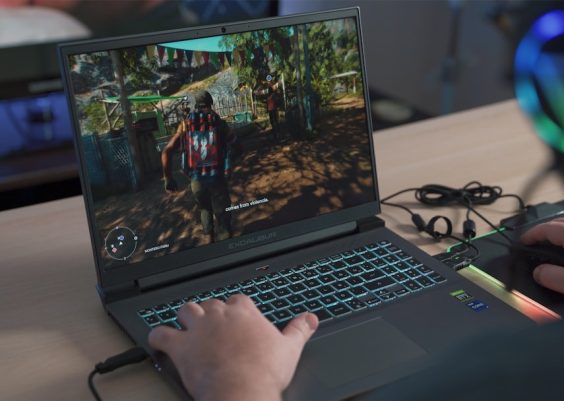WiFiSkeleton is a name that has generated a fair share of intrigue in underground and digital music communities. Known for his experimental and distinctive sound, fans have often speculated about the methods and tools he uses to craft his tracks. One of the most persistent questions centers around whether WiFiSkeleton employs text-to-speech (TTS) technology in his music. In this article, we’ll explore that question in detail and uncover the artistic and technical decisions behind his distinctive vocal style.
TL;DR (Too Long, Didn’t Read)
WiFiSkeleton is believed to have used text-to-speech (TTS) vocals in many of his tracks, blending robotic narration with ambient and electronic soundscapes. While he has not publicly detailed every production method, there is compelling evidence from listeners and audio experts suggesting the use of TTS software. This stylistic choice enhances the surreal and detached tone often found in his music. It also helps the artist maintain anonymity and a digital persona.
Understanding WiFiSkeleton’s Signature Sound
WiFiSkeleton’s music is often described as eerie, experimental, ambient, and highly cybernetic. His tracks usually eschew traditional song structures in favor of fragmented audio collages, vocal samples, and layered atmospheres. A key hallmark of his style is the presence of emotionless, monotone voices that narrate cryptic or emotionally charged messages.
The use of such voices has led many to speculate that WiFiSkeleton is relying heavily on TTS tools, rather than personally recording his vocals. The detachment and mechanical precision of these voices add to the digital dystopia feel of his tracks.

Origins of the TTS Rumor
Listeners began noticing a striking consistency in the vocal delivery in WiFiSkeleton’s work across several songs—flat inflection, lack of breathing noises, and perfectly paced timing. These characteristics are consistent with TTS audio output generated by software like:
- Microsoft Sam
- Balabolka
- Google Text-to-Speech
- Speechify and other voice narration apps
Forum discussions, particularly on Reddit and Discord, have frequently highlighted specific vocal artifacts indicative of TTS, such as robotic sibilance and frequency flattening, which are hard to replicate with human voice alone.
Why Would an Artist Use Text-to-Speech?
There are artistic and practical reasons an artist like WiFiSkeleton might choose to use TTS in his musical compositions:
- Artistic Identity: Using TTS aligns with themes of anonymity, depersonalization, and technology—central to his sound and brand.
- Anonymity: The artist avoids exposing his real voice, preserving a digital persona.
- Accessibility: TTS makes it easier to generate varied vocal content without recording equipment or voice actors.
- Consistency: Robotic voices maintain a uniform aesthetic across tracks and albums.
These factors contribute to the stylistic identity that fans associate with WiFiSkeleton—a meld of the artificial and the emotional, wrapped in digital decay.
Evidence Supporting TTS Usage
Some of the most compelling evidence comes from audio analysis and direct comparisons. In several YouTube breakdowns, content creators have directly compared the voices in WiFiSkeleton’s tracks with known TTS outputs. The alignment is surprisingly accurate.
Furthermore, software developers and music engineers have speculated that some of these voices could be custom-trained TTS bots or might even use AI voice synthesis to add modulation and tonal layering, making them sound more nuanced than default robotic voices.

The Possibility of Blended Techniques
While many tracks appear to be cleanly TTS-generated, others suggest a hybrid method. In some songs, distorted or glitched vocals hint at real voice recordings that have been heavily modulated. This indicates that WiFiSkeleton may not exclusively rely on TTS, but rather blends it with studio effects to achieve particular moods.
This kind of audio manipulation might involve:
- Pitch shifting
- Granular synthesis
- Vocaloid-like voice design
- Glitch and vocoder plugins
Given the increasing accessibility of deep learning and AI music tools, it’s plausible that WiFiSkeleton is experimenting with more sophisticated audio engines beyond default TTS software.
Official Word — Or Lack Thereof
As of yet, WiFiSkeleton hasn’t released any substantial interviews or behind-the-scenes content revealing his creative process. His online presence is limited, cryptic, and aligned with the lore surrounding digital anonymity. This lack of transparency both intensifies the mystery and fuels fan theories.
Until the artist decides to clarify, technical speculation and audio analysis remain the main methods fans have for determining TTS involvement.
Impact on the Music Scene
WiFiSkeleton’s use of synthetic voices—whether fully TTS, AI-generated, or hybrid—has influenced many emerging artists in online music communities. It represents a shift toward voice-as-sound-design rather than traditional lyrical or vocal performance.
This opens up new possibilities in:
- Digital storytelling without a physical presence
- Music as a multi-sensory or cybernetic experience
- The rise of voice anonymity in creative expression
In that sense, the use of TTS is not just a technical shortcut but a fundamental element of WiFiSkeleton’s artistic ethos.
Conclusion
Whether WiFiSkeleton exclusively uses text-to-speech in his music may never be definitively known, but the signs strongly point in that direction. His deliberate aesthetic choices, audio characteristics, and thematic consistency all support the theory. In the end, TTS is not simply a tool but an integral layer of his soundscape, helping to define his unique position in the digital music space.
FAQ
-
Q: Does WiFiSkeleton use his real voice in any songs?
A: There’s no confirmed evidence of WiFiSkeleton using his real voice. Many speculate he manipulates TTS or heavily effects sampled voice clips to create his signature sound. -
Q: What TTS software might he be using?
A: Popular guesses include Microsoft Sam, Balabolka, and newer neural-based TTS generators like Google’s WaveNet. -
Q: Why would an artist prefer TTS over singing or rapping?
A: It can preserve anonymity, fit a thematic aesthetic, and allow for consistent and emotionless vocal delivery suited to certain genres. -
Q: Is WiFiSkeleton a real person or an AI?
A: All signs point to WiFiSkeleton being a real person or group of people who utilize AI and digital tools as part of their creative process. -
Q: What genre does WiFiSkeleton belong to?
A: His work is often classified under experimental electronic, ambient, glitch, or vaporwave subgenres.




